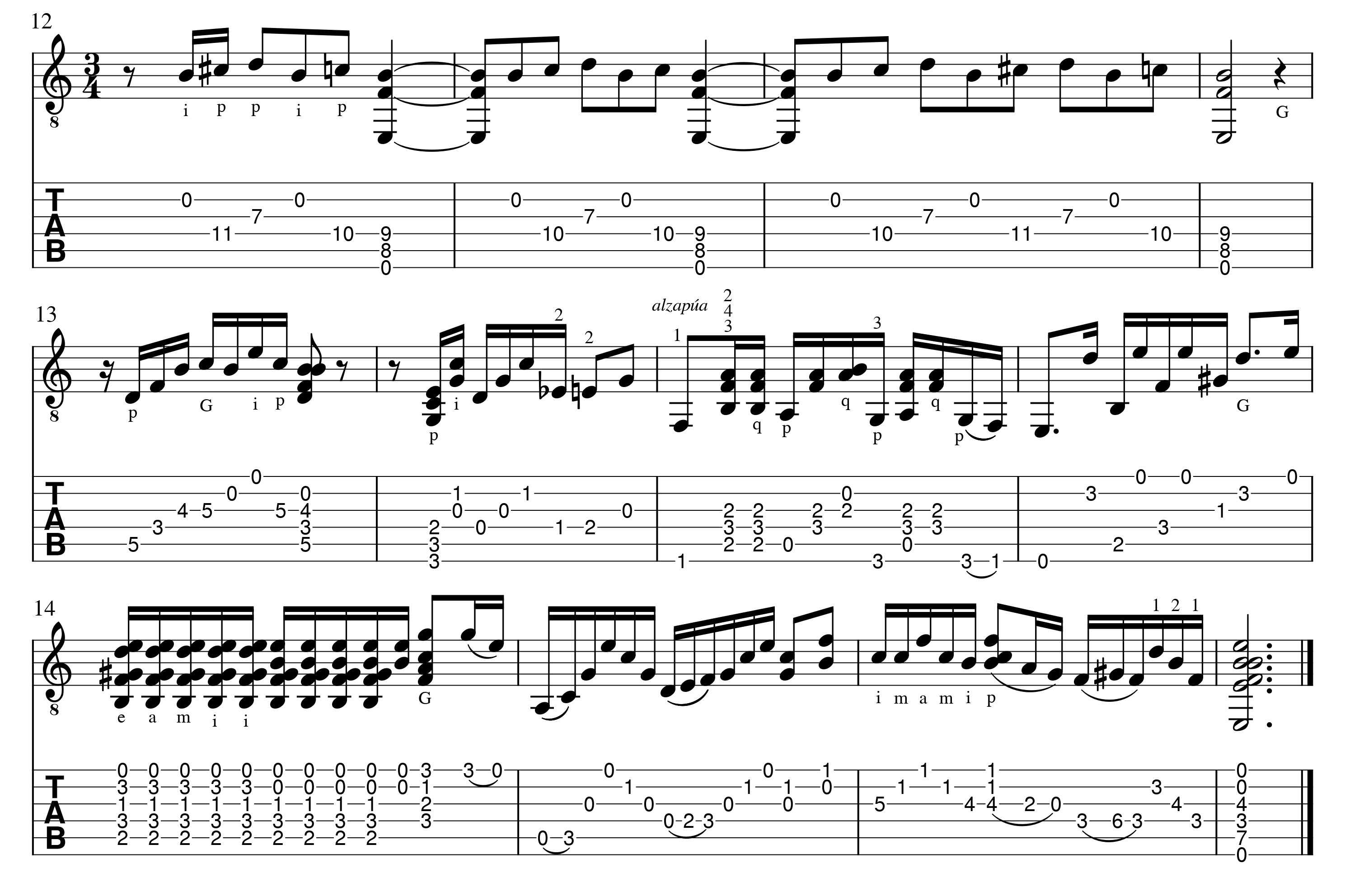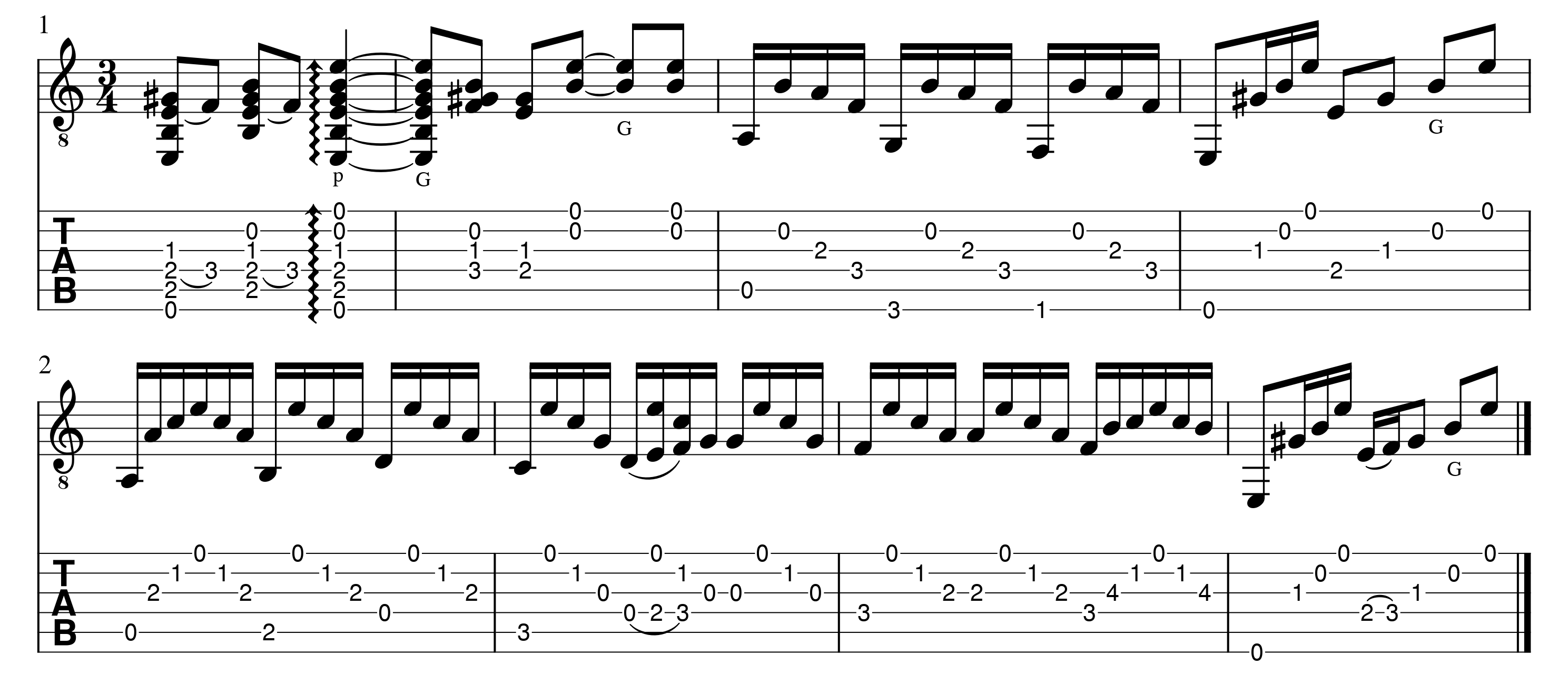
The following falsetas were inspired by the playing of Manolo Franco, Pepe Habichuela and others, and there is an underlying aire of Niño Ricardo throughout. In the score, each staff shows a full 12-beat compás, and the staves are numbered in the upper left-hand corner to help identify them with the corresponding playing tips.
(0:00-0:11) The remate (beats 10-12) of staff two is from Niño Ricardo and is repeated four more times in this soleá. Notice the rhythmic figure at beat 11.

(0:12-0:22) The falsetas in staves three and four are nearly identical. In the remate of staff four, push your fingernails across the strings by extending a-m-i (wrist still) and then drag your thumb (wrist rotates). The technique is aggressive and must be played carefully in order to place the final thumbstroke squarely on the second string at beat 12. The same technique appears at the beginning of staff five.
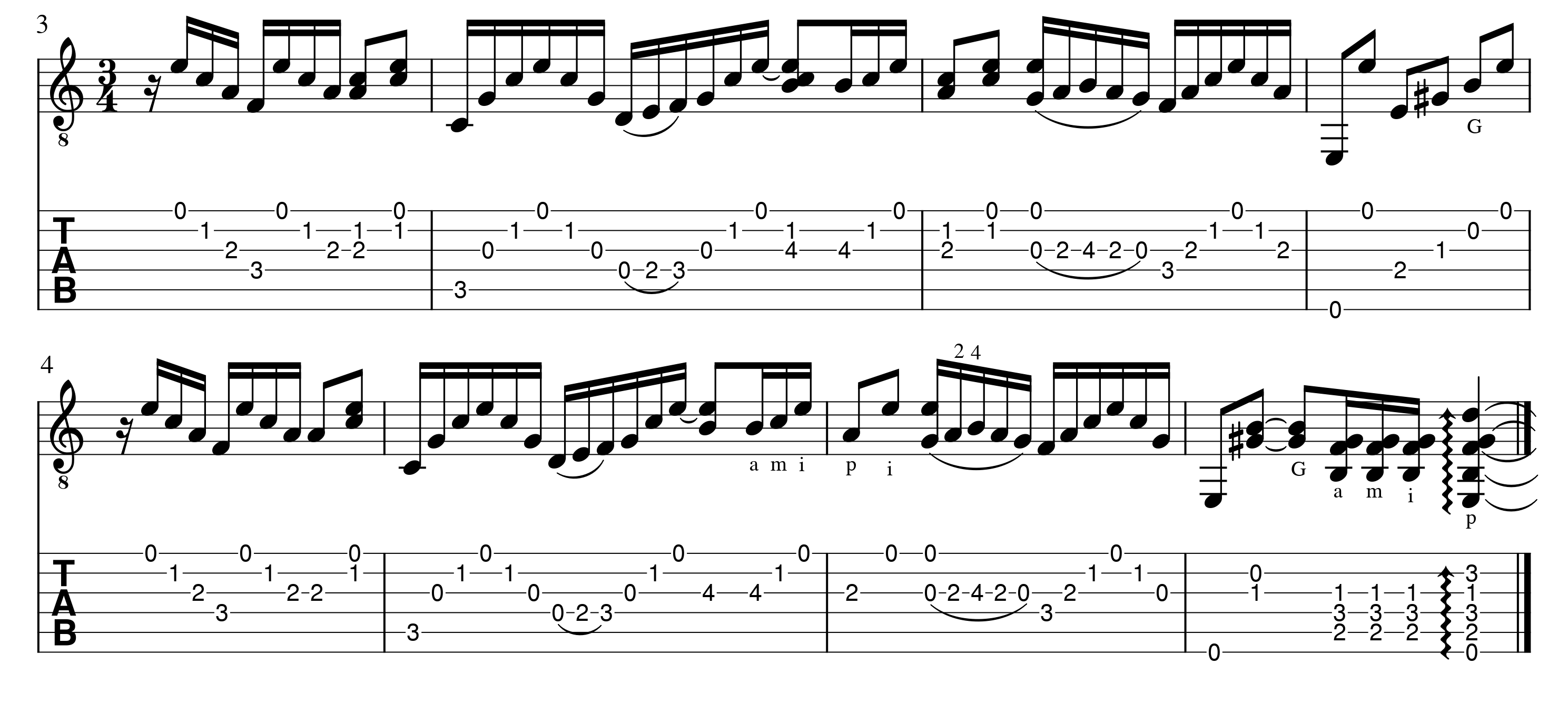
(0:23-0:35) Staff five starts with the notes sustained at the end of the preceding staff. In staff six, the first slide (glissando) is actually the result of moving the left hand into position, so if this is too difficult you can try starting the arpeggio at beat 7 with a sixteenth-note rest. At the end of the falseta, the open sixth string rings into the next compás.
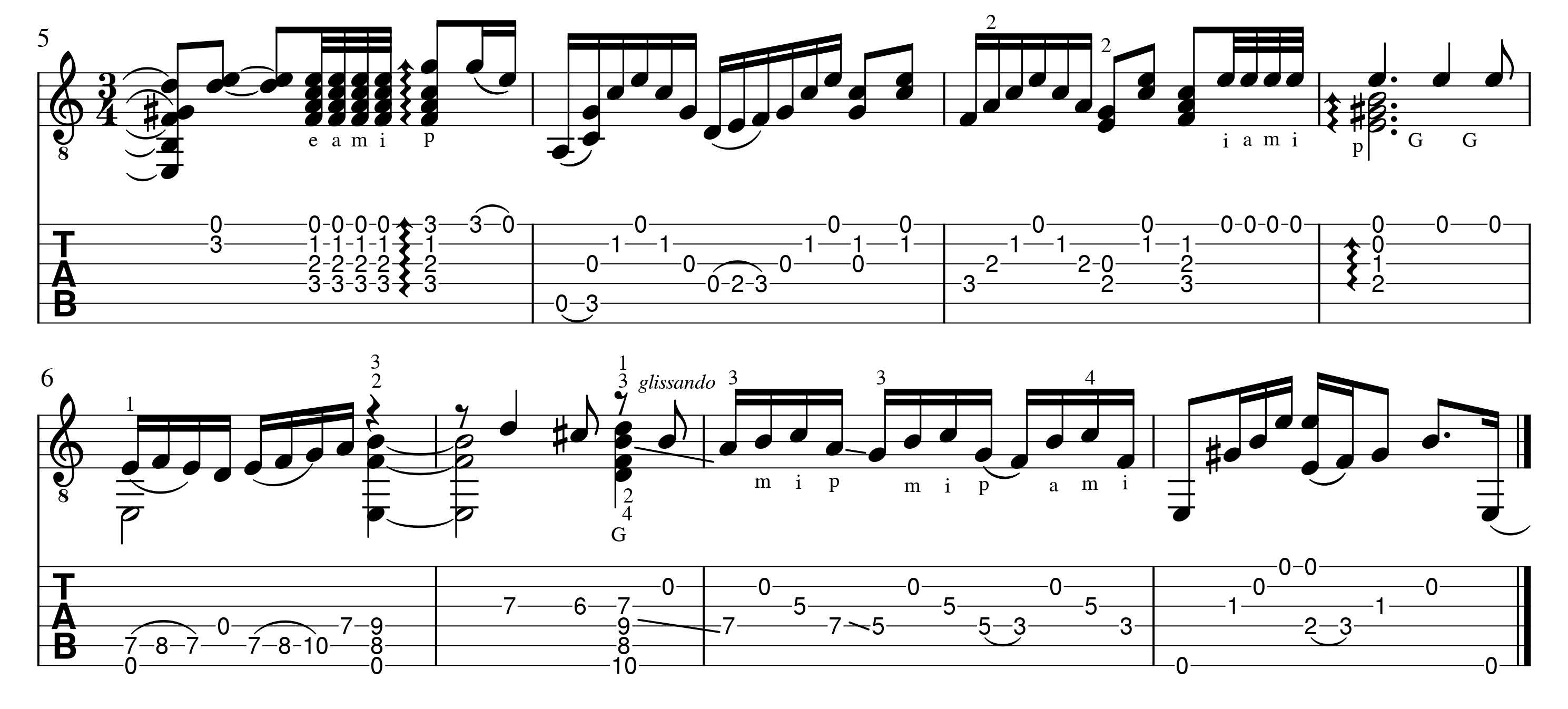
(0:36-0:41) Staff seven is based on the playing of Niño Ricardo. Notice that it starts with the open sixth string sustained from the preceding staff. I fret the E chord in the first measure with a partial index barre on the fifth, fourth and third strings. At beat 4, it would sound better to carry through with the thumb to the fourth string. At beat 9, the septuplet figure is known as a rake or arrastre and is the result of dragging the ring finger to the sixth string at beat 10. In the remate, the rasgueado would sound better with the fingering q-a-i-p-q across all six strings (four thirty-second notes and a thumbed upstroke on beat 12).

(0:42-0:53) Staves eight and nine contain ideas that several players have recorded in the last 30 years. Many guitarists have worked the descending octave basses into soleá, fandangos de Huelva and jaleos, although the idea may go back to Ramón Montoya. In staff nine, I've written the last sixteenth note before beat 10 as a fourth-string F, because it would sound better, although I play the open third string in the audio.
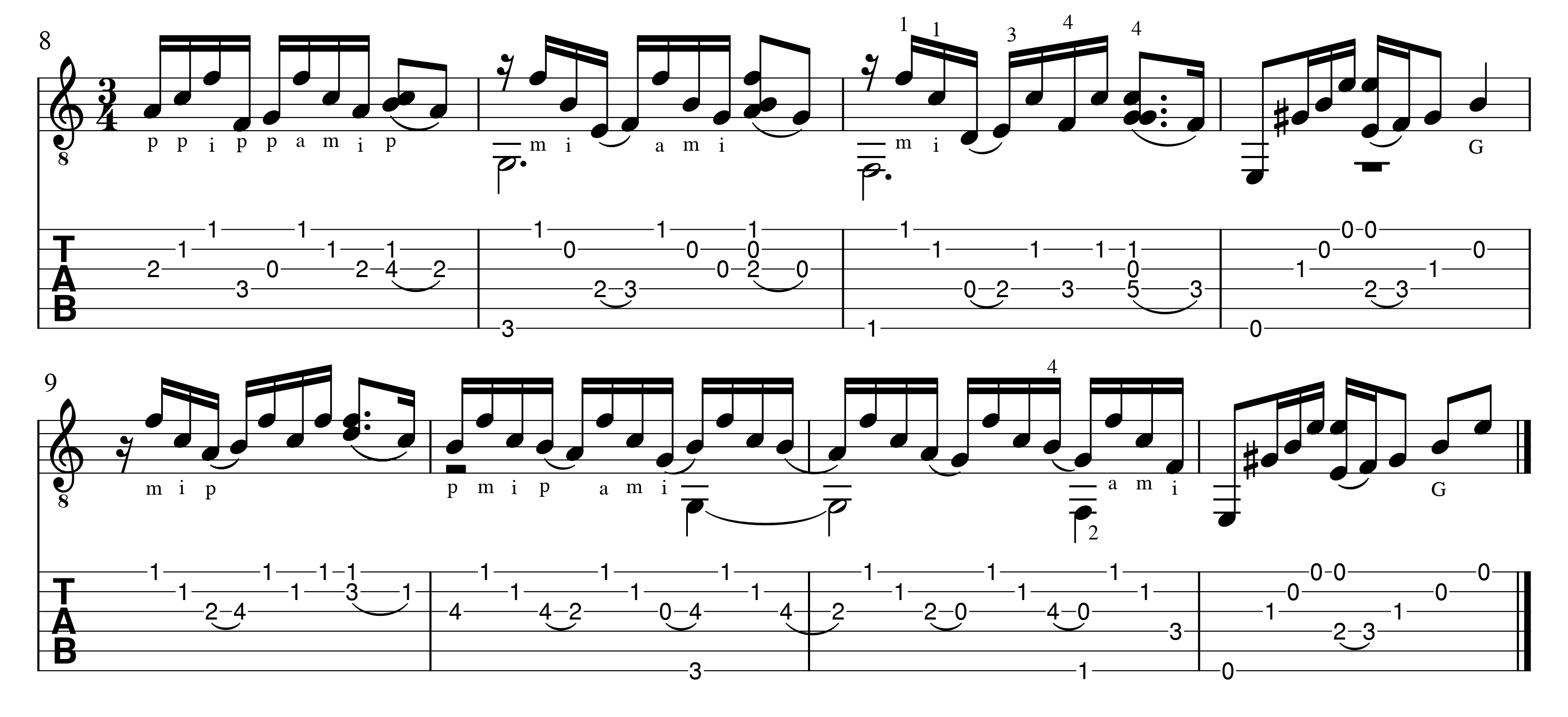
(0:54-1:06) In staff 10, play the slurs on the fourth string at beats 4 to 6 with index downstrokes and brush the trebles with upstokes. The cierre (beats 7 to 9) is from the playing of Enrique de Melchor. In staff 11, the indicated fingerings for both hands are what worked best for me at the time, although there are several different ways to play beats 1-6 (a partial barre will work, too). After the rasgueado at beat 6, keep your little finger on the fourth string at the fourth fret for the arpeggio at beat 9.
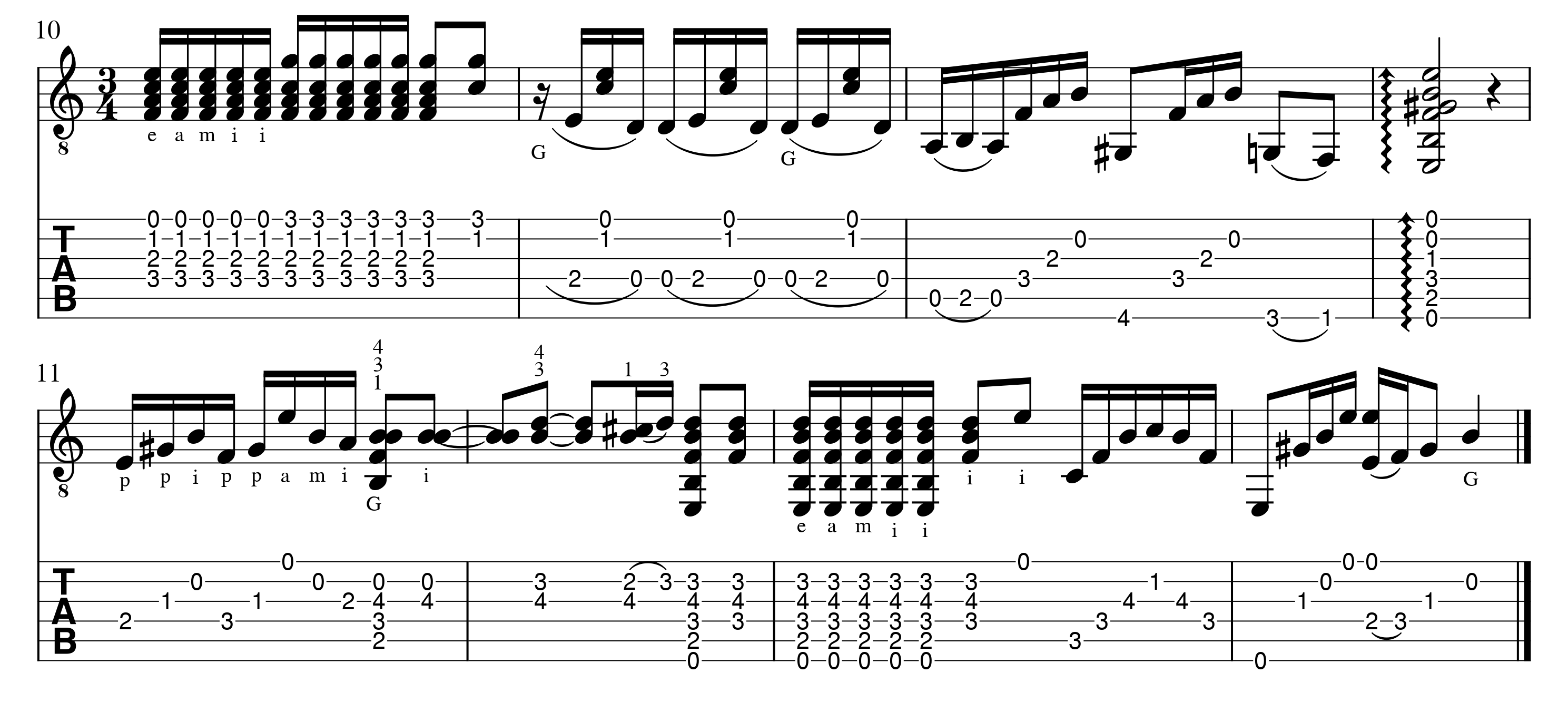
(1:07-1:27) Staves 12-14: In staff 13, the thumb plays everything unless otherwise indicated. The alzapúa can be fretted with the middle finger on the fifth and sixth strings. The quintuplet remate is from the playing of Juan Carmona. In the last staff, the slur and arpeggio at beat 9 are played with a partial barre across the second, third and fourth strings at the third fret. If you barre with the tip of your index on the fourth string, all you have to do is raise the barre for the final chord at beat 10. This chord was inspired by the playing of Vicente Amigo.
